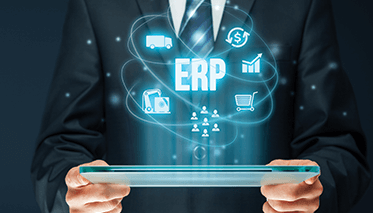December 12, 2022 - by Synoptek
The enterprise of today looks quite different from that of two years ago. The pandemic has managed to transform workplace dynamics by bringing hybrid work culture into the limelight. For digitally transformed organizations that use IT as a strategic differentiator to drive their business to new heights, the move to the new model has been rather straightforward. But for the digital laggards, mobilizing the workforce and making workplace practices more flexible has not been easy.
The reliance on legacy systems and standard, paper-based processes to conduct day-to-day business transactions has restricted them from offering the level of flexibility and mobilization that the post-pandemic workforce expects – and demands. Read on as we throw light on the roadblocks organizations face in crafting a robust mobilization strategy and how enterprise solutions like Microsoft ERP help them attain flexibility and mobilization of the workforce.
The Roadblocks to Crafting a Robust Mobilization Strategy
Mobility plays a crucial role in the success and growth of any business. Every organization needs real-time insights into ongoing activities to increase operational accuracy, boost employee productivity, and simplify complex business operations – all while enhancing revenue and profitability. The mobility achieved by leveraging the power of real-time response enables organizations to respond quickly to emerging trends and dynamics while catering to the evolving needs of businesses and their customers. Around the world, CXOs and business owners are recognizing the power of mobility to drive their businesses forward.
Enterprises are gaining a broad range of benefits from their investments in workforce mobilization: from resolving distance and connectivity issues to empowering frontline workers to make better and faster decisions with ease and more.
The ideal mobilization strategy remains elusive due to several roadblocks, despite how critical mobilization is to the success of modern businesses. These roadblocks include:
- The presence of legacy solutions that are difficult to operate and maintain, impossible to integrate, and demand high maintenance costs
- The frequent and unmonitored customization of systems and applications that makes the existing IT ecosystem extremely rigid, complex, and inflexible
- A lack of standardized financial processes that cause every team or department to rely on distinct approaches and methodologies to run the business
- Continued reliance on manual processes and tribal knowledge that not only drains employee efficiency but also delays the decision-making process
- Lack of real-time visibility into business processes, operational bottlenecks, and employee concerns makes it difficult to drive continuous improvements
The Role Enterprise Business Systems Play in Driving Mobilization
Enterprise business systems have entered a new era. Instead of simply integrating business processes or improving collaboration, these systems have become increasingly experience-driven, reflecting their critical role in digital transformation. Characterized by agility and AI-driven processes, these new-age ERP systems introduce much-needed flexibility into the workplace and play an important role in driving mobilization.
For instance, systems like MS Dynamics 365 deliver core out-of-the-box features, empowering teams with the capabilities they need to run day-to-day operations effectively. At the same time, they offer much-needed real-time visibility while allowing the organization to scale in step with evolving business demands seamlessly.
A recent TEI study by Forrester on the Total Economic Impact of Microsoft ERP uncovered several benefits organizations realize by implementing the solution. For instance, the study found that finance staff achieves a three-year productivity improvement of $2.30 million and IT staff that of $402,870. Since Microsoft ERP also cuts down on legacy costs, it results in projected savings of $3.52 million over three years.
That said, let us look at the role Microsoft Dynamics ERP plays in driving mobilization and enhancing flexibility:
- Microsoft Dynamics ERP’s capabilities empower organizations to overcome the limitations of heavily customized legacy solutions. In so doing, it frees the workforce from the burden of manual and cumbersome processes and allows them to meet business goals with greater ease and speed.
- By bringing data from across the enterprise into a centralized repository, MS Dynamics 365 streamlines access to real-time insights. It offers a certain level of flexibility that allows the organization to keep pace with the speed of digital business.
- Migrating from legacy, on-premises ERP solutions to cloud-based ERP systems like Microsoft ERP helps overcome the challenges of over-customization – thus minimizing the effort, time, and the number of resources needed to administer and maintain functionality.
- MS Dynamics 365 helps standardize business processes across different departments, business units, and locations and allows team members to support high-value work via access to real-time information.
- Microsoft Dynamics ERP also offers high-level disaster recovery capabilities, paving the way for seamless business continuity – in the event of an outage or natural calamity – without requiring the workforce to devote man-hours to keep systems up and running 24/7.
- Finally, migrating to a modern ERP system like MS Dynamics 365 enables organizations to realize significant savings via reduced infrastructure expenditures, decommissioned redundant solutions, and minimum auditing expenses.
Moving Forward with Microsoft ERP
As the hybrid workplace becomes the norm, empowering the workforce with the data and capabilities they need to work from anywhere and contribute to business success has become a top priority for every organization. Enterprise solutions like Microsoft Dynamics ERP enable access to critical business data and insights anytime, anywhere, enabling the workforce to improve the quality and accuracy of their decisions. At the same time, through greater system availability, reduced administration, and improved collaboration, they lead to several productivity and efficiency improvements – that eventually translate into revenue gains.


